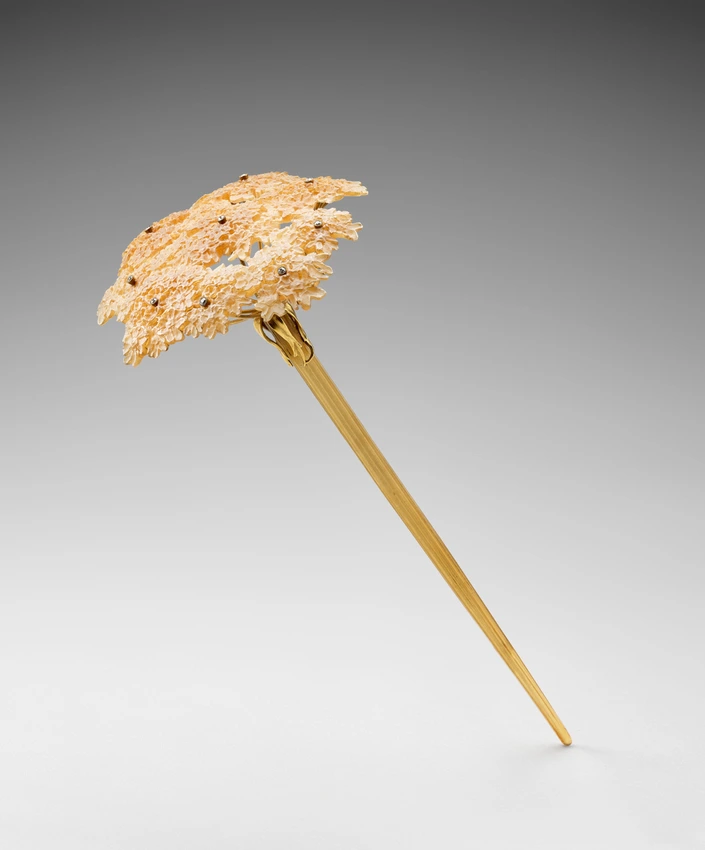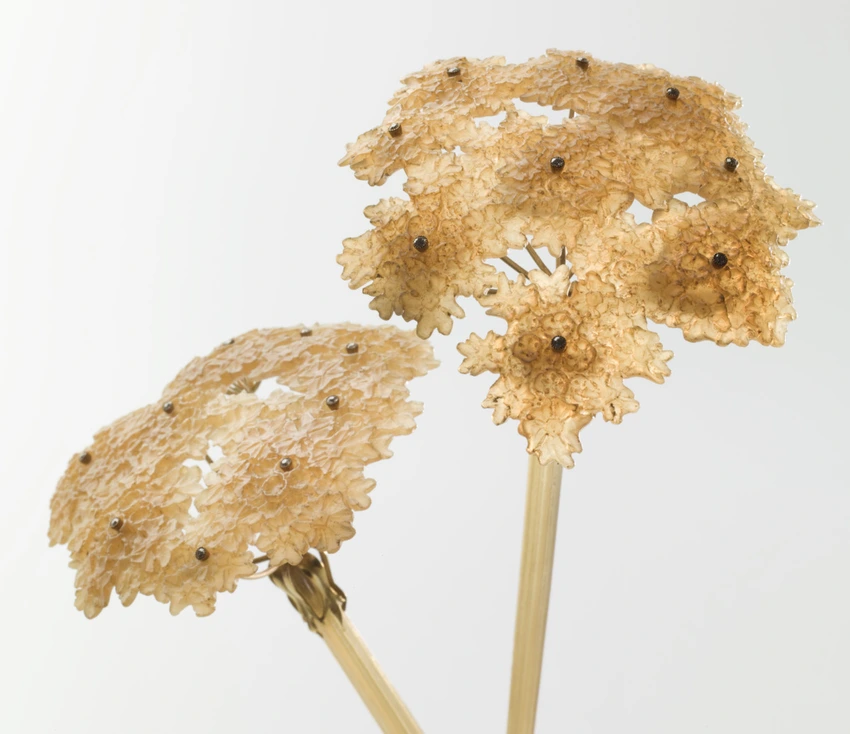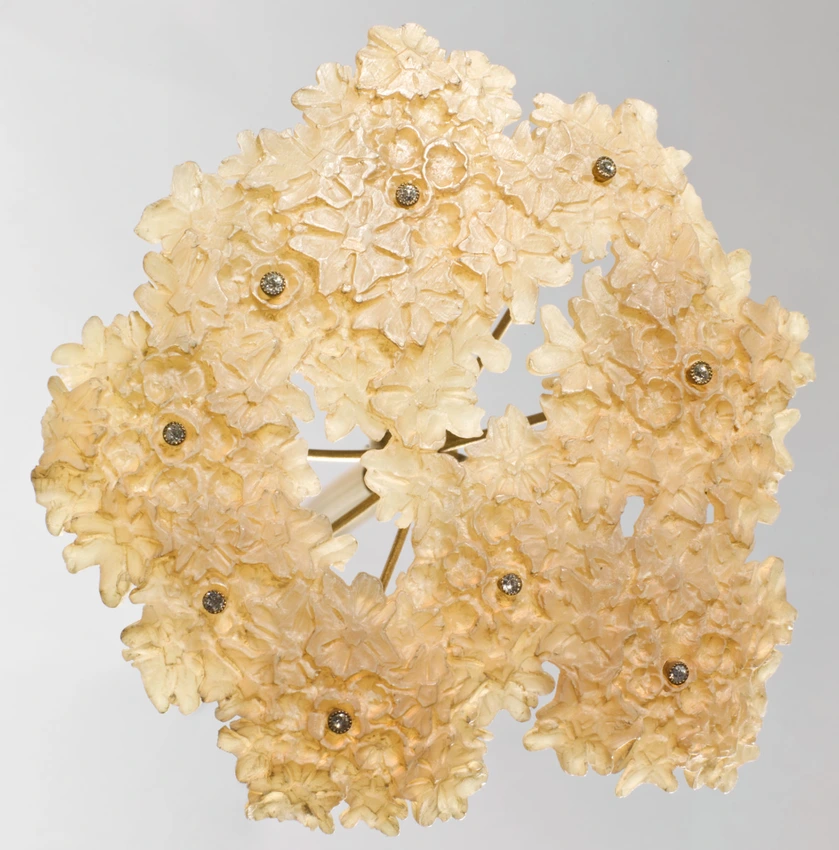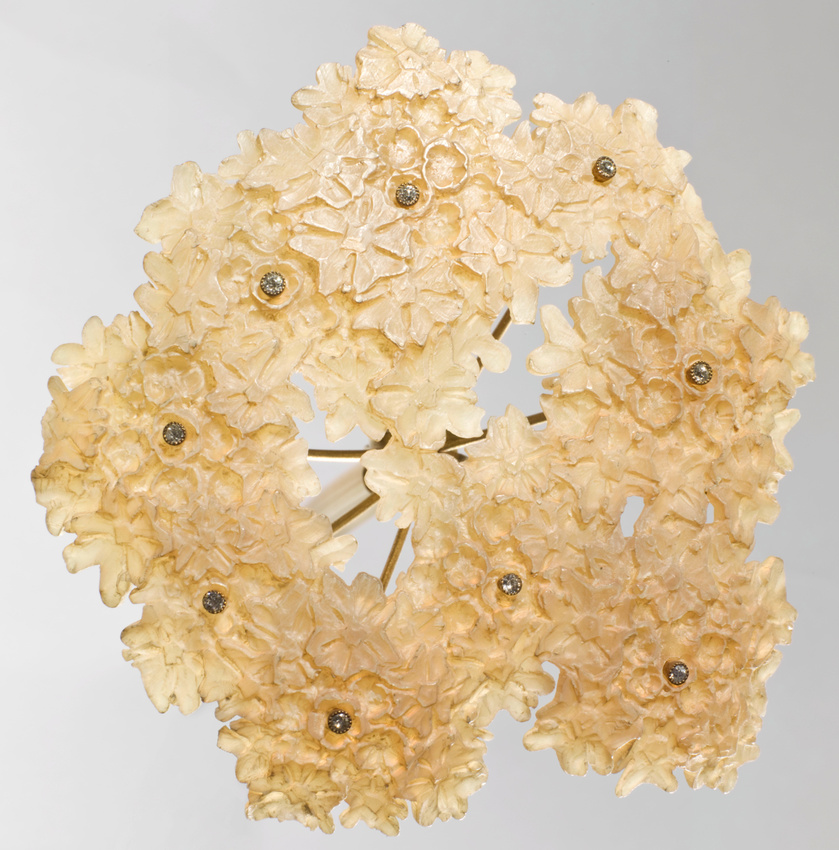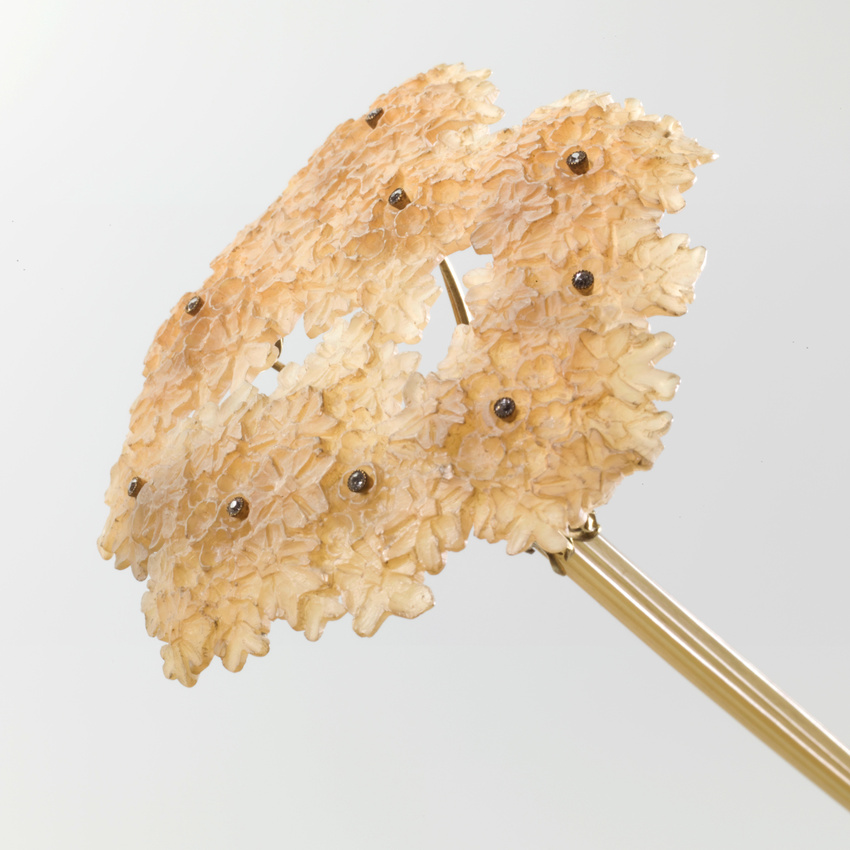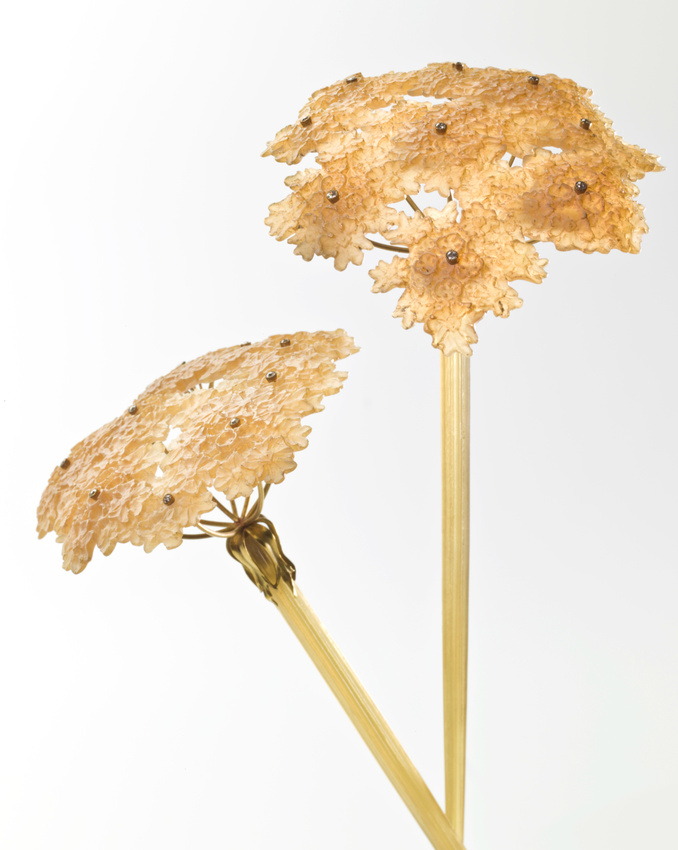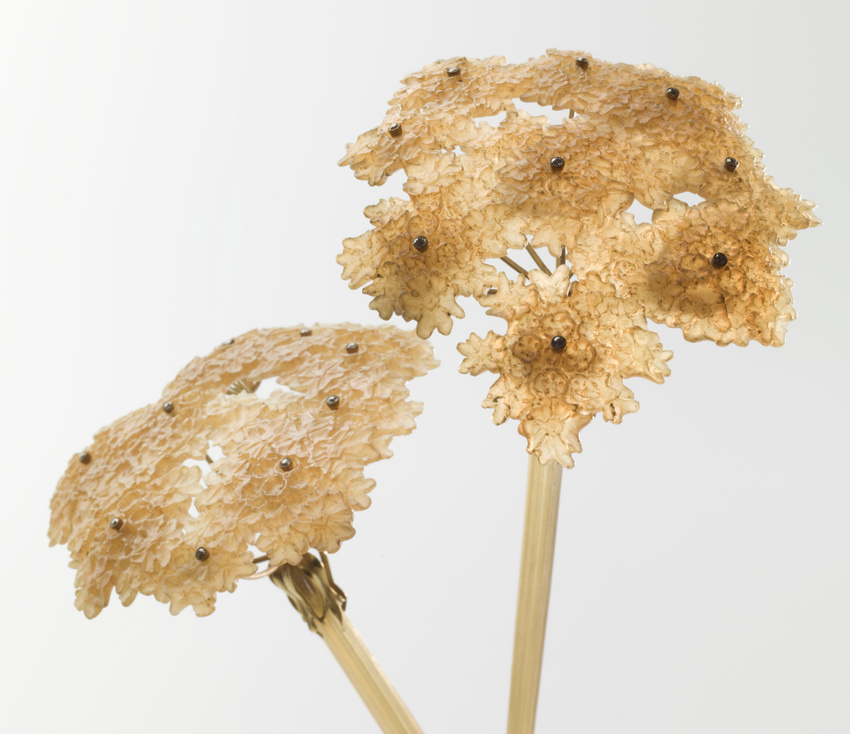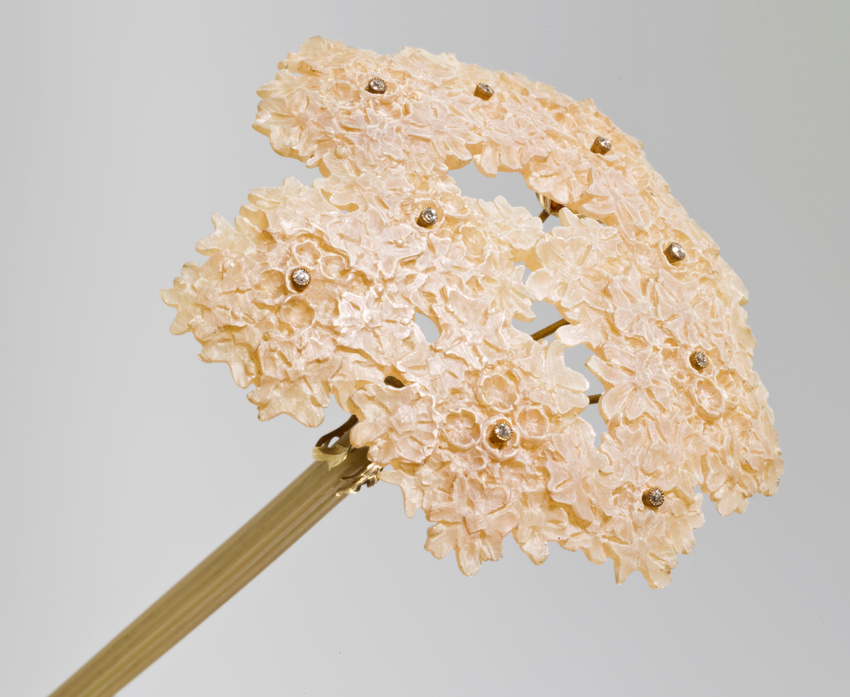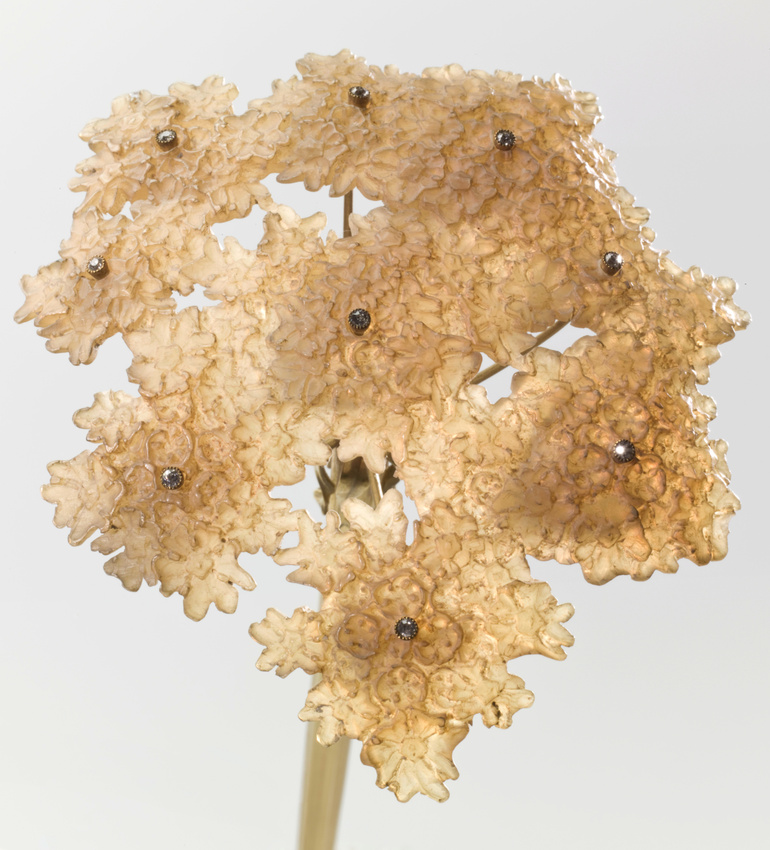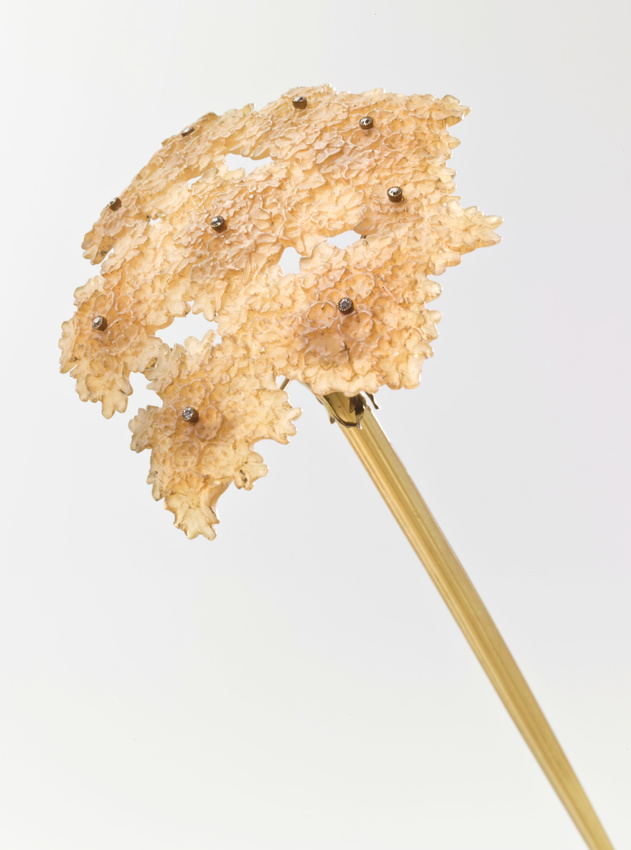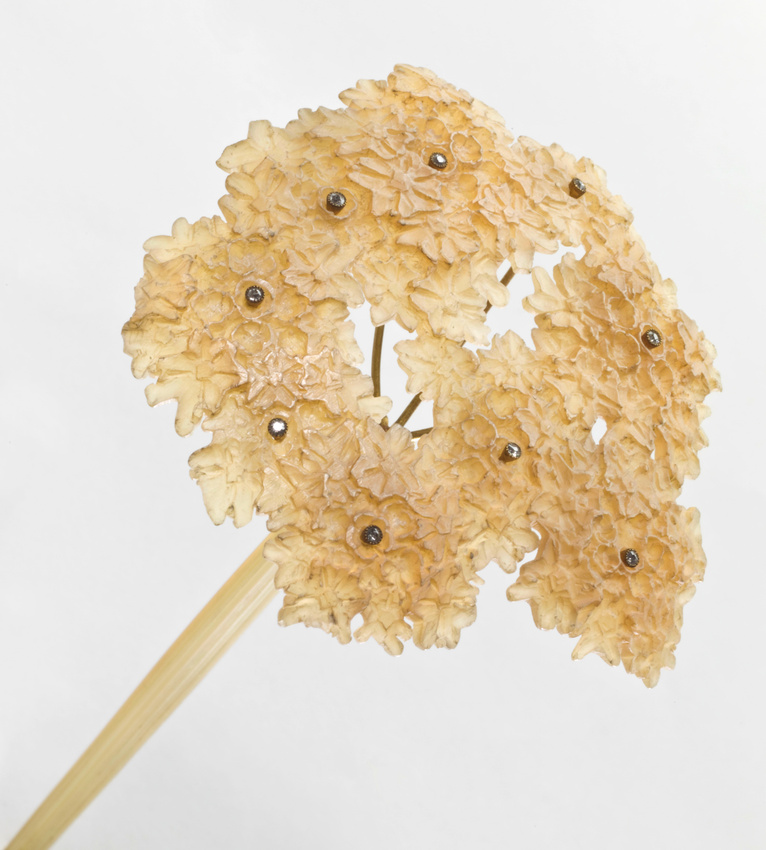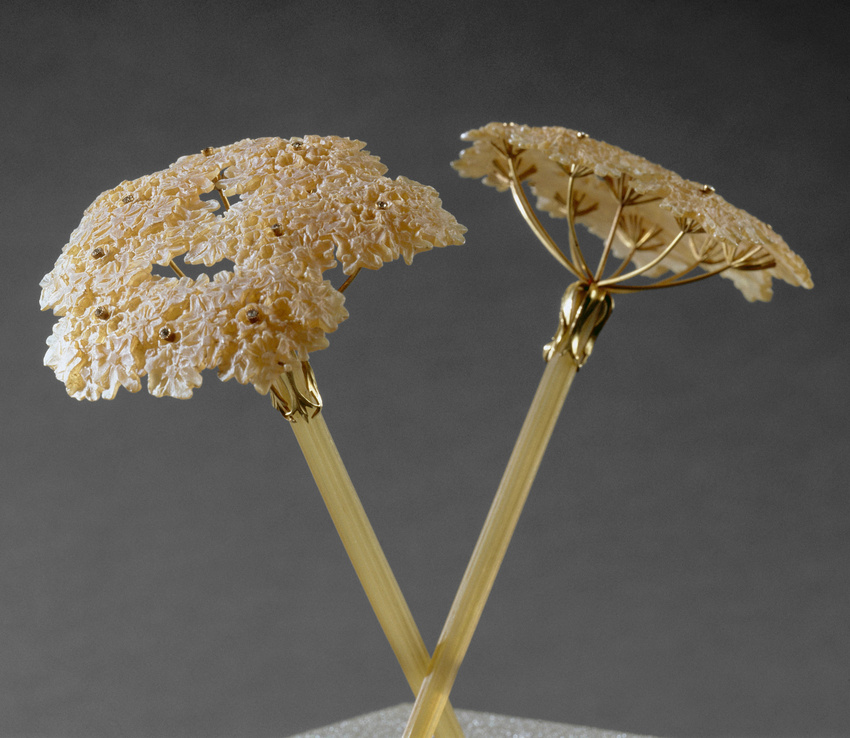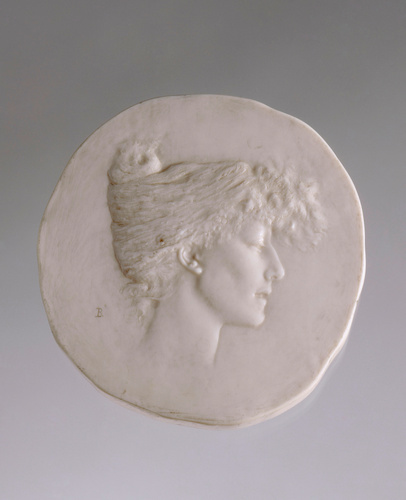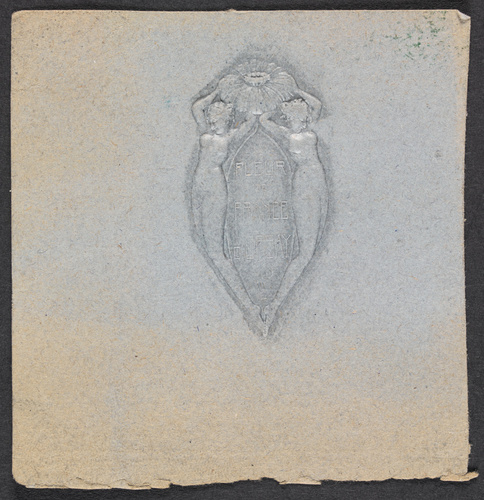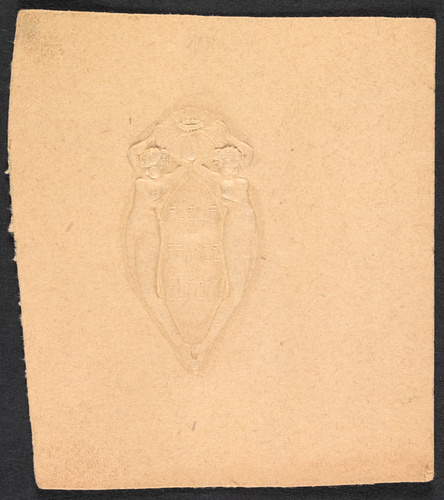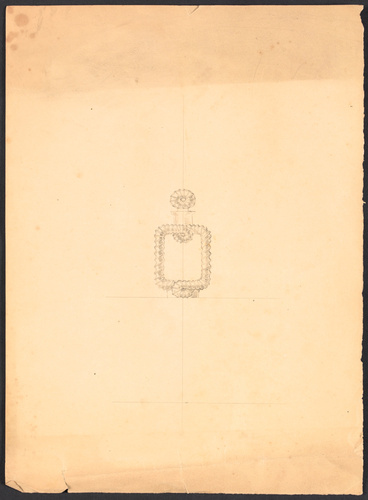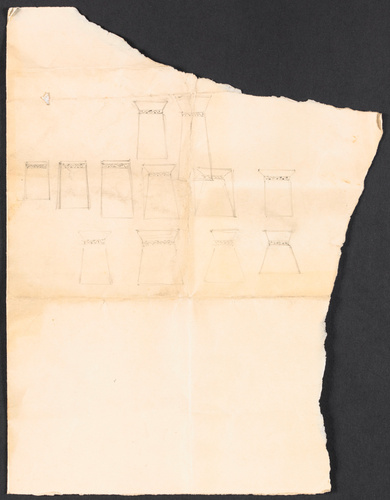Berce
The keen interest shown in hairpins and combs in the late nineteenth century can be explained in various ways. From the Second Empire, the craze for Spain brought the traditional tortoiseshell comb into fashion. Then the Japanese vogue introduced the West to chased metal and lacquered wooden combs, as well as long hair pins turned into real ornaments. Moreover, with the fashion for chignons, combs and hair pins became indispensable. Jewellers then seized on these objects as a pretext for their inventiveness.
René Lalique was a master in the creation of refined ornaments. He judged the value of a piece of jewellery not by the richness of its materials, but purely on its artistic content. He was fascinated by the possibilities of horn—considered 'obscure and shameful'—and used it as a substitute for the traditional, luxurious tortoiseshell.
The way the horn has been treated in these hairpins is typical of Lalique's talent as a designer and skill as a craftsman. The umbels are immediately identifiable. Hogweed was a very popular motif at the time, particularly among the artists of the Nancy School.
The designer has stylised the natural characteristics of the flower head in an abstract manner. By its structure, the piece of jewellery fulfils its function of holding the chignon in place and enhancing beauty of the hair. But its success also comes from the choice of materials and their subtle combination. The remarkably carved pale horn suggests the millefiori aspect of the flower head. The tiny diamonds catch the light and translate the shimmering of the inflorescence. The gold imitates the stiff stems and the involucres.
